Sui Generic
In which Norm confronts the diminishing returns of Osgood Perkins' LONGLEGS.
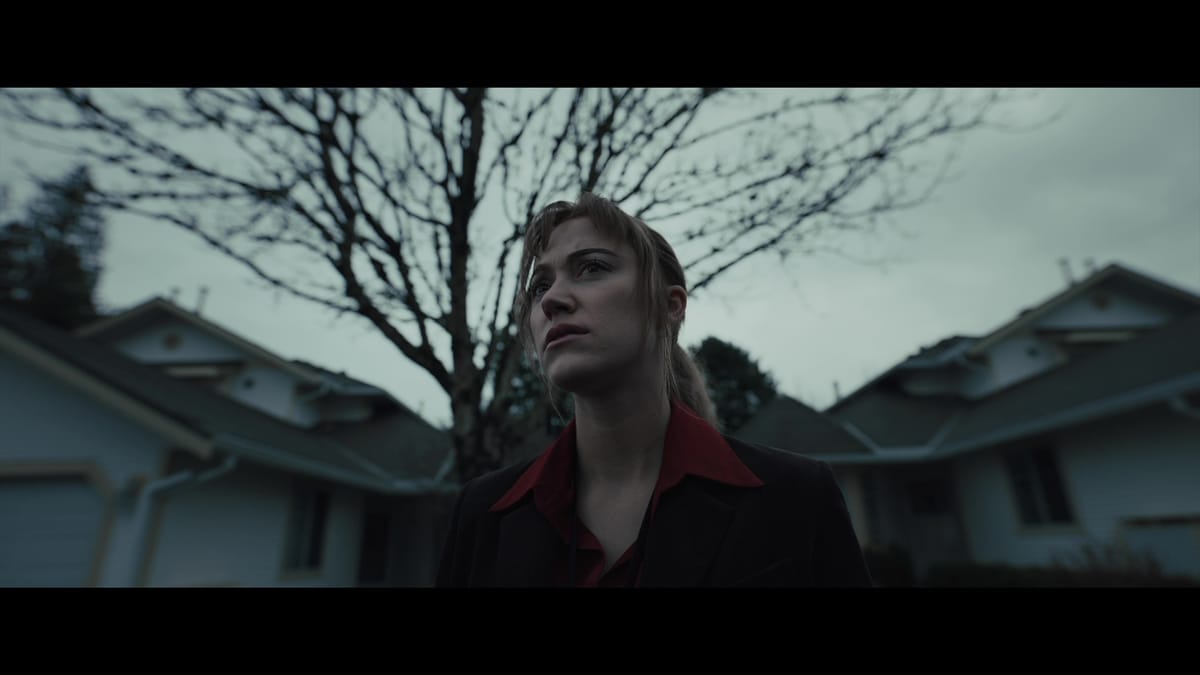
Stop me if you’ve heard this before: In the Clinton era, FBI agent Lee Harker (Maika Monroe) demonstrates exceptional intuitive skills during a manhunt, and her actions get her assigned to the hunt for a murderer who’s been operating unchecked for decades.
The only thing they know about the killer, lead agent Carter (Blair Underwood) explains, is that he slaughters entire families without leaving any physical trace of his presence except for a letter, written in an untranslatable Zodiac-style cipher. But it always ends with a single word in plain English. A signature. Longlegs.
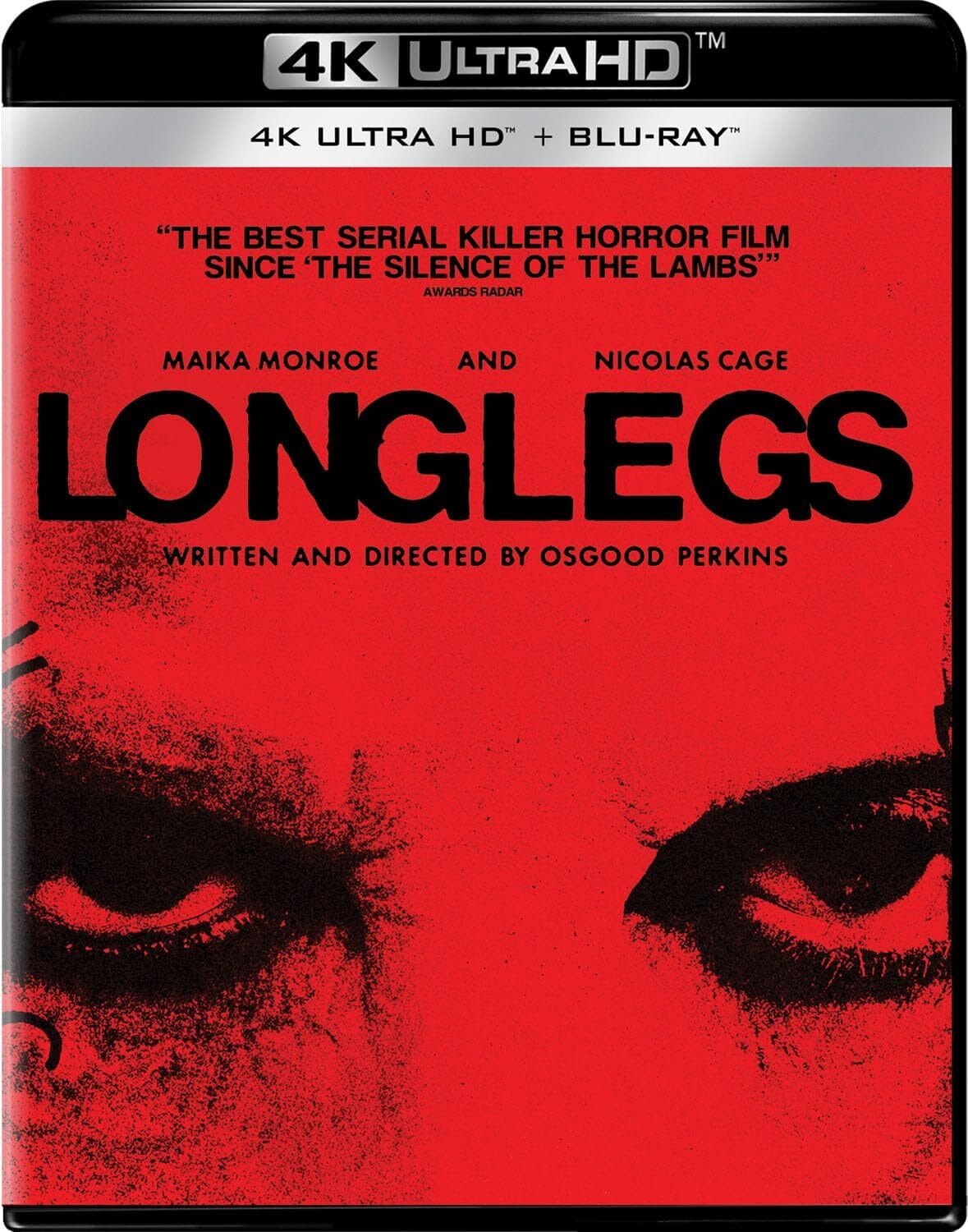
This is Longlegs, Osgood Perkins’ stylish horror-thriller, which built up quite a head of steam this spring as it rolled out its creepy-austere marketing, built around a lot of shots of Monroe looking gaunt and concerned with a few quick flashes of Nicolas Cage’s giggling villain. Now that it’s on disc, I finally caught up with it, and … well, here’s the thing.
Longlegs is an incredibly ambitious work. Shot with a mixture of film and digital formats by Andrés Arochi Tinajero, it’s an infernally beautiful experience, simultaneously sickly and manicured. Monroe’s deliberately flattened performance sets the tone for a story bleached clean of humanity or hope. It’s crushingly serious, chilly and impenetrable, and very watchable. It just doesn’t add up to much.
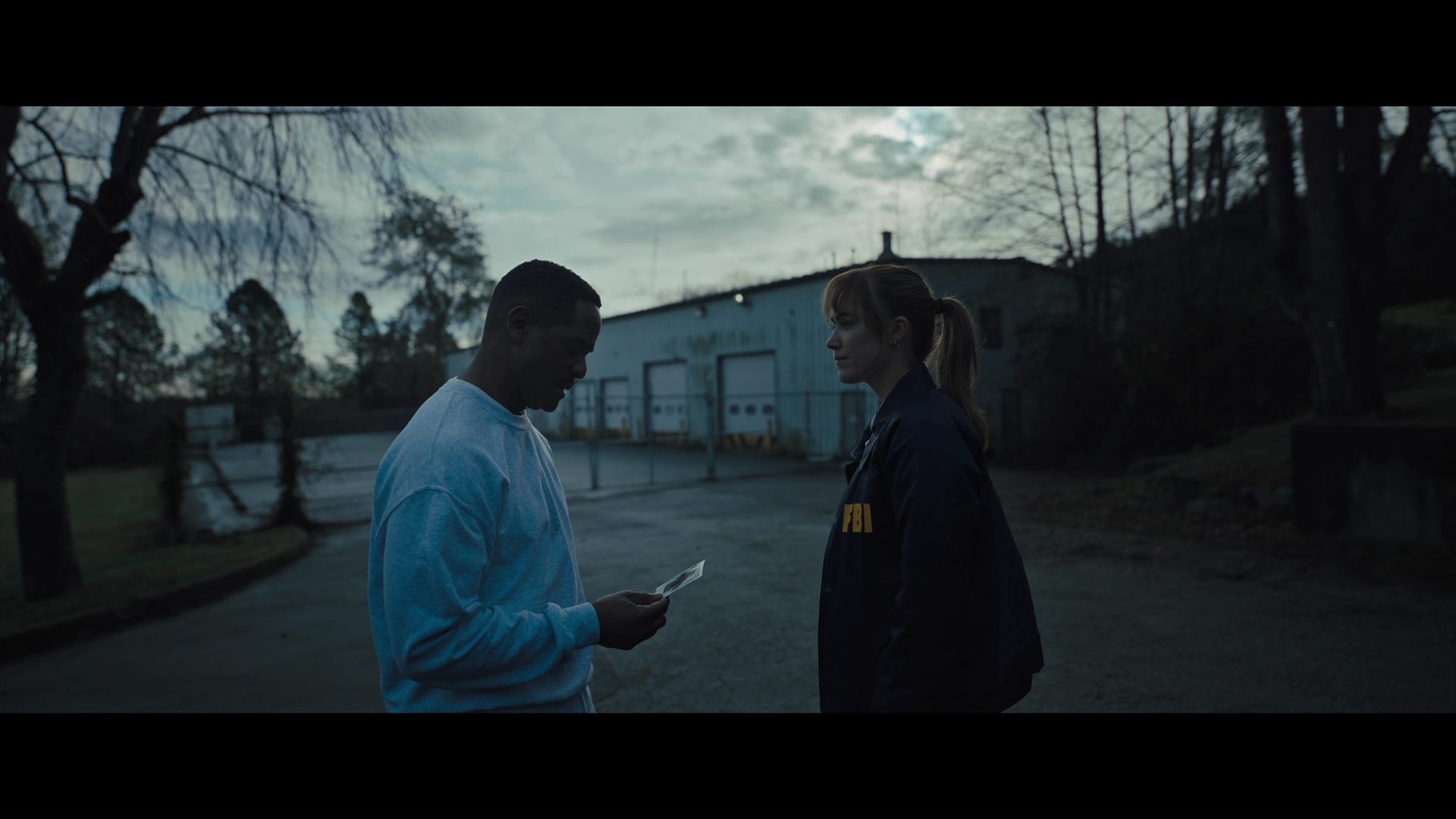
With his previous films The Blackcoat’s Daughter, I Am the Pretty Thing That Lives in the House and Gretel & Hansel, Perkins demonstrated a knack for creating creepy, festering pocket universes in which his characters found themselves trapped; he’s more concerned with building the worlds than populating them with fully developed characters, which gives his work a certain lonely intensity that can often compensate for the lack of plotting. Longlegs shares that central emptiness – there are maybe a dozen speaking parts in the picture – but the claustrophobic nature feels more limiting.
We know who Lee’s chasing, thanks to a prologue that finds Longlegs – played by Cage as a kind of Satanic Tiny Tim – popping up on an isolated farm to scare a child. What we don’t know is how he operates, which we glimpse in bits and pieces in parallel to Lee’s increasingly frenzied investigation, which seems to be counting down the days to his next attack. And we also know that he knows Lee is on his trail.
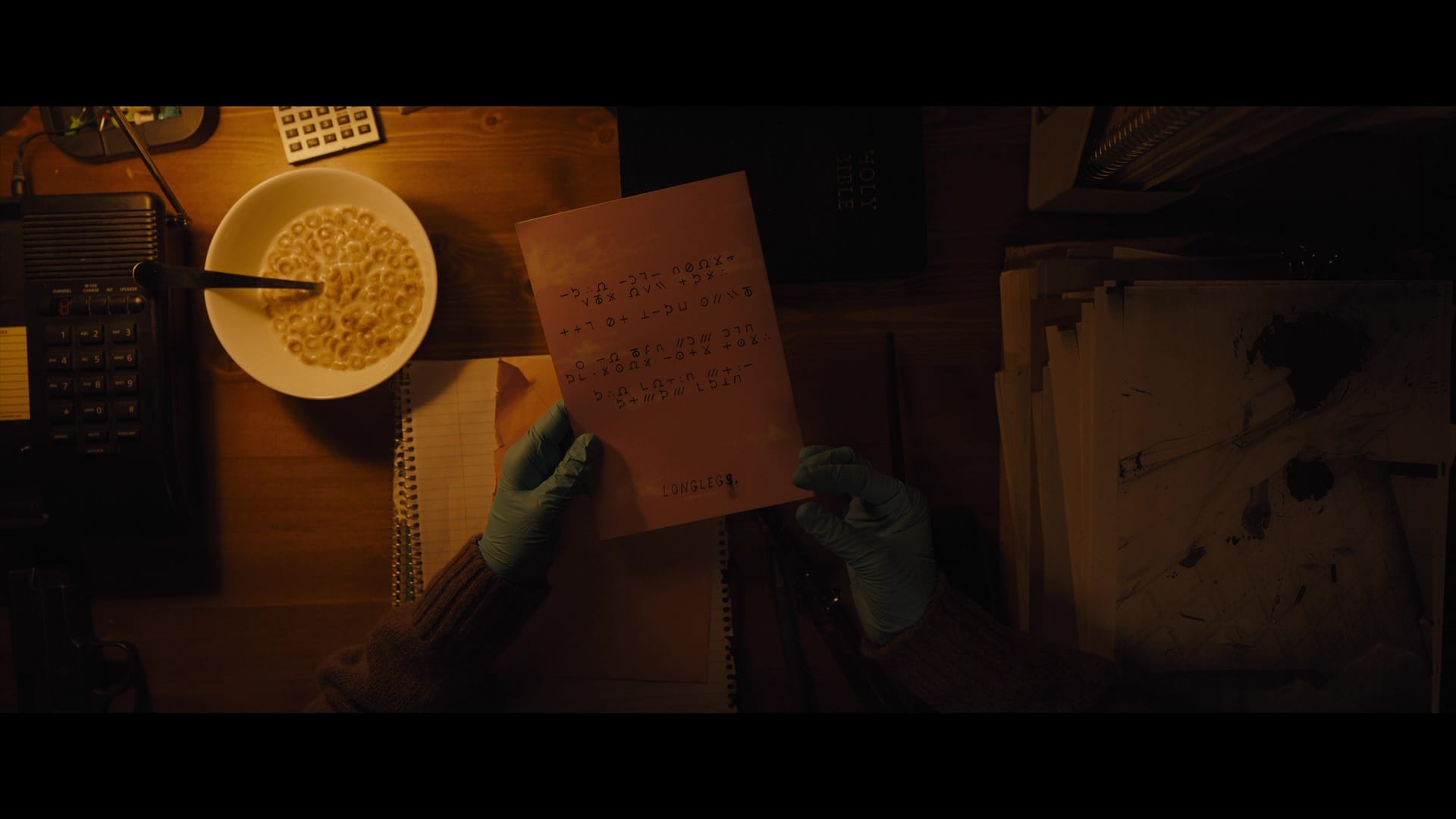
In the supplements, Perkins describes his procedural as a “milkshake” of pre-existing horror concepts – ’90s The Silence of the Lambs and Seven are his obvious touchstones, but he also cites Don’t Look Now and Carrie as films whose DNA is floating around in there as well. (The unblinking camera of David Fincher’s Zodiac, too.)
Another really obvious one, which some of you may have already wondered about, is Michael Mann’s Manhunter, from which Longlegs borrows both the killer’s physical awkwardness and a key aspect of his MO. Manhunter, of course, was the book Thomas Harris wrote before The Silence of the Lambs, and the one in which he introduced the character of Hannibal Lecter.
There’s no Lecter-like character in Longlegs, which is why the comparisons to The Silence of the Lambs can’t help but fall flat; it’s just not the same story, beyond “young FBI agent is drafted into a much more disturbing case than she’d ever expected.” (Not that this isn’t a great premise for a new property: Chris Carter basically spun The X-Files out of the same sentence.) But we got to know Clarice Starling really well, and Dana Scully, too; Perkins never tells us much about Lee Harker beyond the fact that she has a complicated relationship with her mother Ruth (Alica Witt), whose only pressing question when they call each other is whether Lee still says her prayers every night. (She does not.)
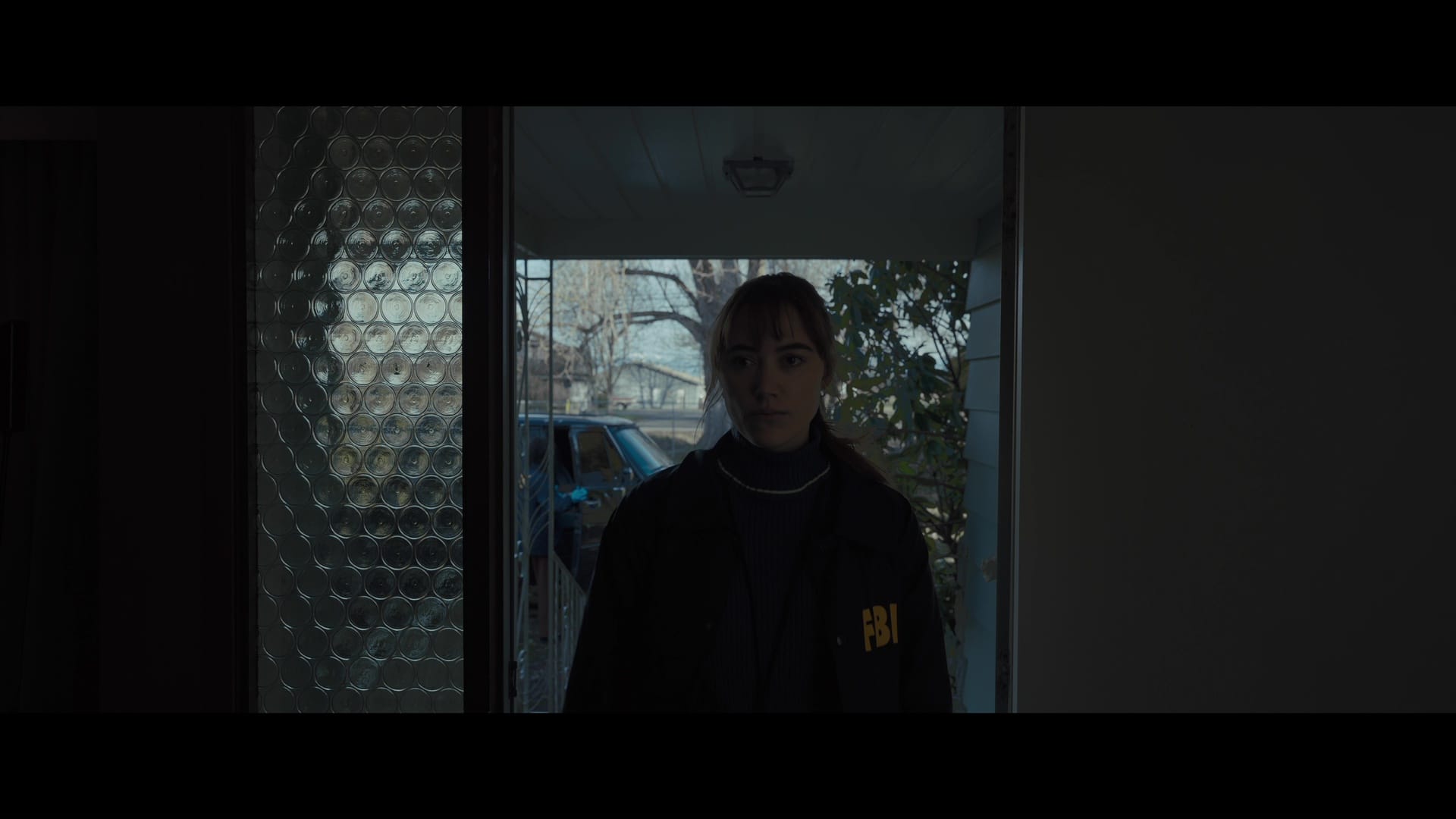
Nevertheless, Lee keeps putting things together about Longlegs that no one has ever put together before, and in a series of exquisitely designed, darker-than-dark moments, we are allowed to understand what Longlegs is trying to accomplish, and how he does it. And again, because of the tiny, suffocating world Perkins has built, it all feels awfully familiar, with a final twist that didn’t land for me at all because of the limited possibilities the film offers.
And maybe that’s the problem with the film: It’s a derivative pastiche that keeps insisting it’s a bold, original vision. It runs a tight 100 minutes but still feels twice as long as it needs to be. (I had the same problem with Pretty Thing and Gretel, come to think of it.) And it’s so heavy with its own portent that eventually it all feels a little silly.
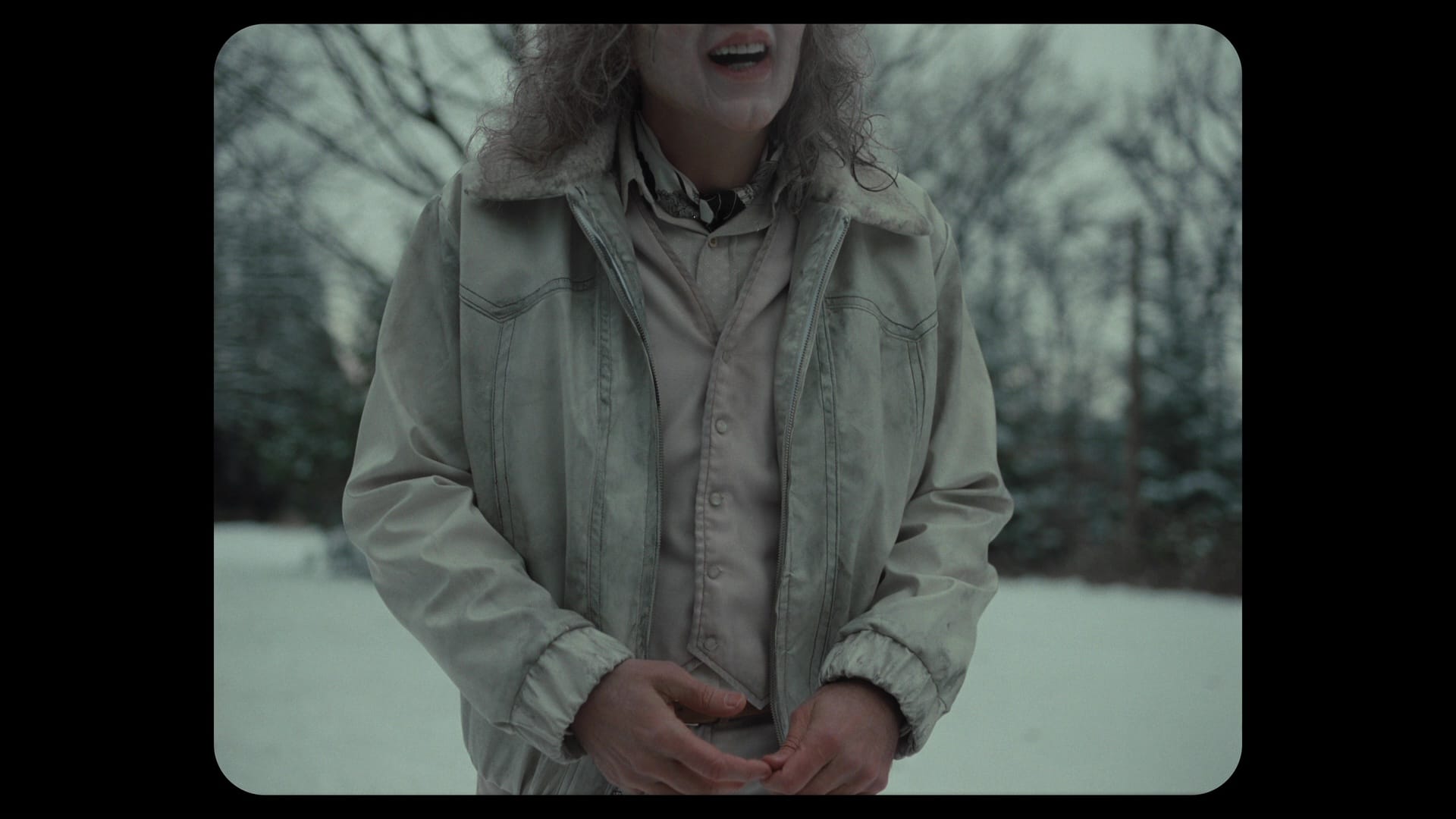
It’s technically unimpeachable, and the 4K disc does wonders for the shifts between celluloid and digital sources – the former presented in pillarboxed 1.33:1, and the latter in 2.39:1 widescreen. (Perkins and Tinajero are among a growing group of filmmakers playing with the possibilities of multiple aspect ratios within a 1.78:1 container, and a couple of the shifts in Longlegs are designed to use the frame in a way that overwhelms and surprises; that was fun.) Audio is DTS-HD 5.1 rather than Atmos, but it’s damn good, firing Zilgi’s atonal score into your ears from unexpected angles and capturing every spiky octave of Cage’s whiny, whimpering yowl.
And yeah, maybe my biggest disappointment with Longlegs is that it treats what feels like a brilliant go-for-broke Nicolas Cage performance as an oddity to be kept off-screen; for all the mythological weight the character builds, Perkins holds him at arm’s length, filming him at harsh angles or cutting away seconds before he comes into focus. I thought about the time we spent with Manhunter’s Tooth Fairy and Silence’s Buffalo Bill, and how their monstrous natures came cloaked in human frailties, and how Longlegs is content to see its villain as a grotesquerie, slathered in latex and a fright wig. Who’d be scared of this goon?
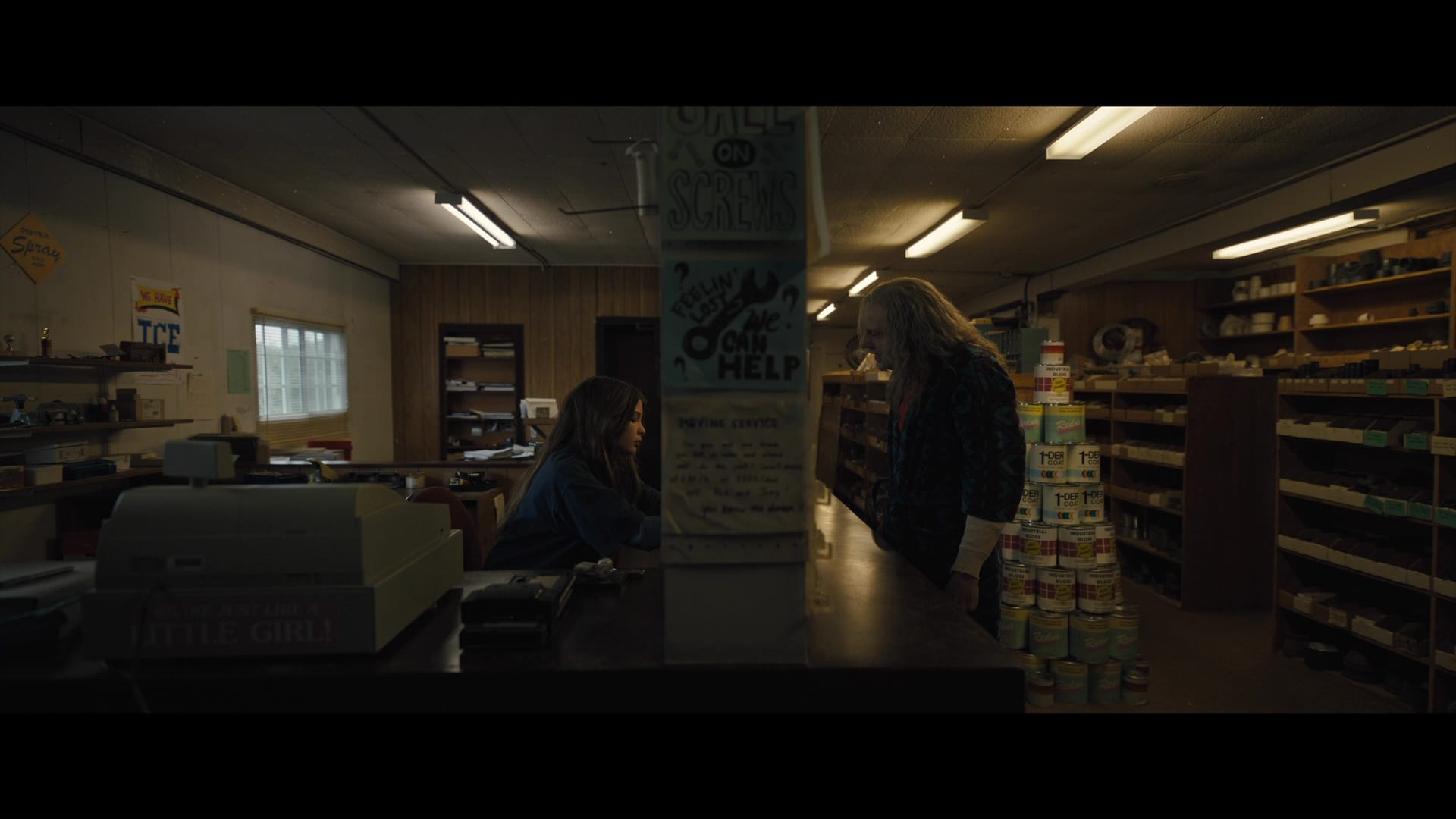
Indeed, there’s a scene about halfway into the picture that finds Longlegs in a general store, utterly failing to strike terror into the heart of its surly young clerk; that feels like a crack in the movie’s oppressive armor, and it’s clearly meant to puncture the tension, but … well, if a teenage girl can see through his nonsense, how is this maniac getting away with everything else he’s been doing?
There’s an explanation, sort of, but I don’t know that it lands. I don’t know that any of Longlegs lands, honestly. It casts a spell and works very, very hard to maintain it, but in the end it’s all just a bunch of stuff we’ve seen before.
Perkins unpacks the themes, symbolism and aesthetic in an engaged audio commentary, but beyond that the supplemental section – identical on both the 4K and Blu-ray platters – is fairly thin: Brief EPK interviews with Monroe, Underwood, Witt and Perkins, and a collection of bits and pieces that are not nearly as deep as the filmmaker would have us believe.
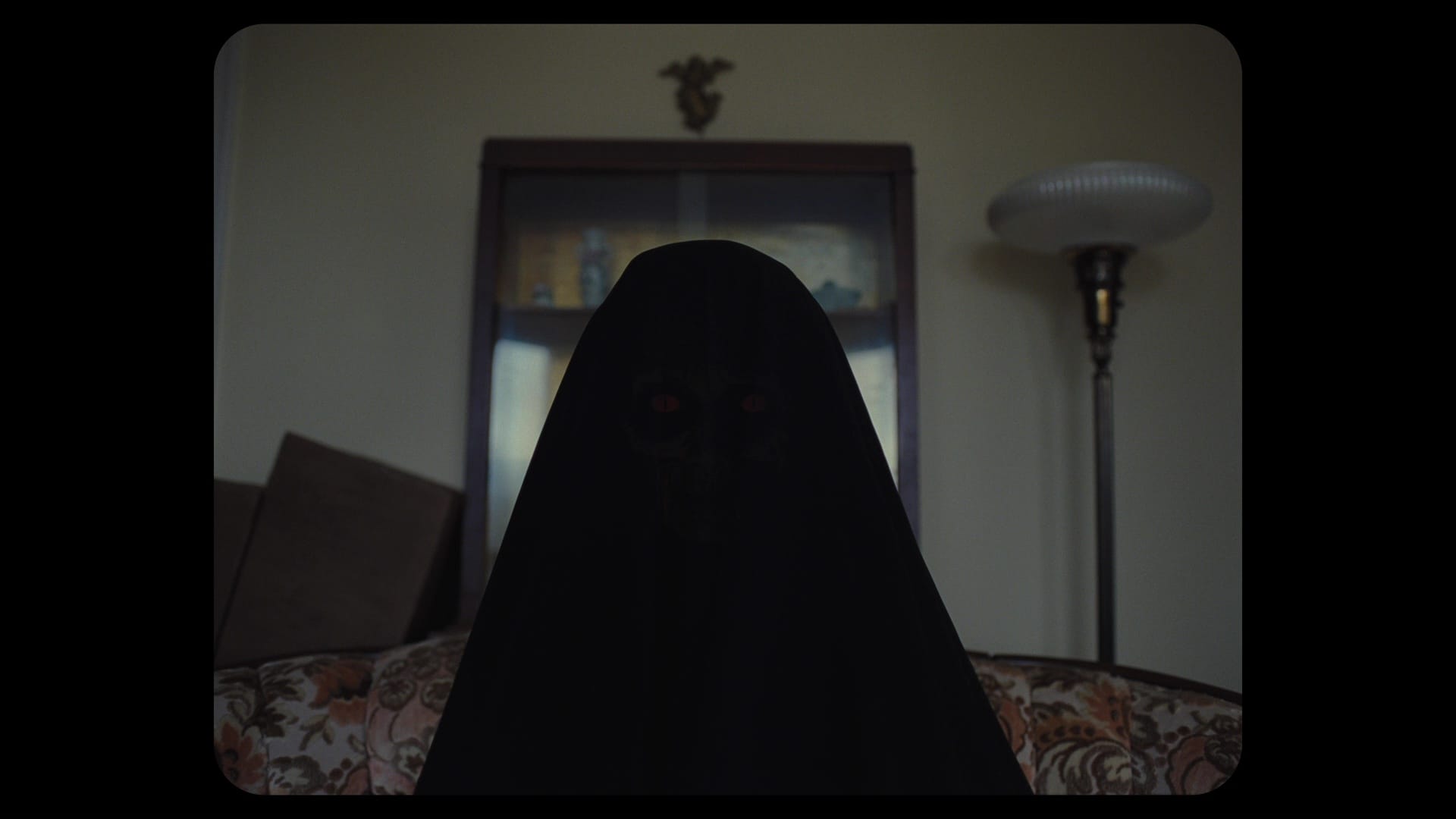
“Clues” offers a trio of recontextualized film clips which purport to explain some of the film’s mysteries, while “Evidence” and “More Evidence” are still galleries of the crime-scene photos created for the FBI’s dossier. The evocative, deliberately paced teaser and trailer are also here – along with another trailer, “Dirty/Sweet”, which superimposes song lyrics over key images to expose hidden messages within them. Deep, man. Real deep.
Longlegs is now available in a 4K/Blu-ray combo edition from Elevation Pictures in Canada and Decal in the US. A stand-alone Blu-ray is also available.
